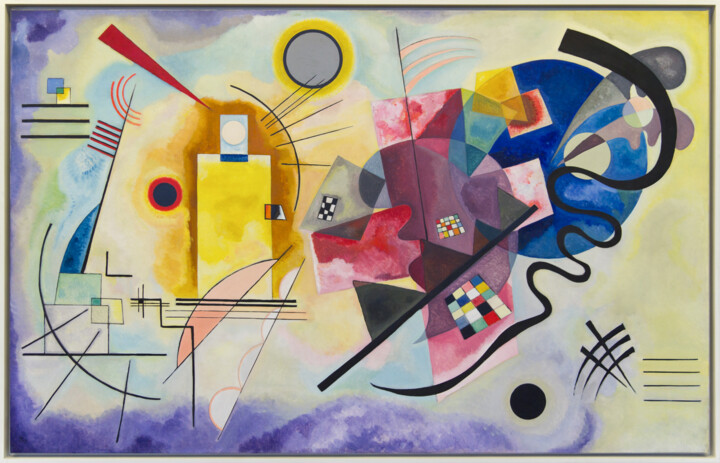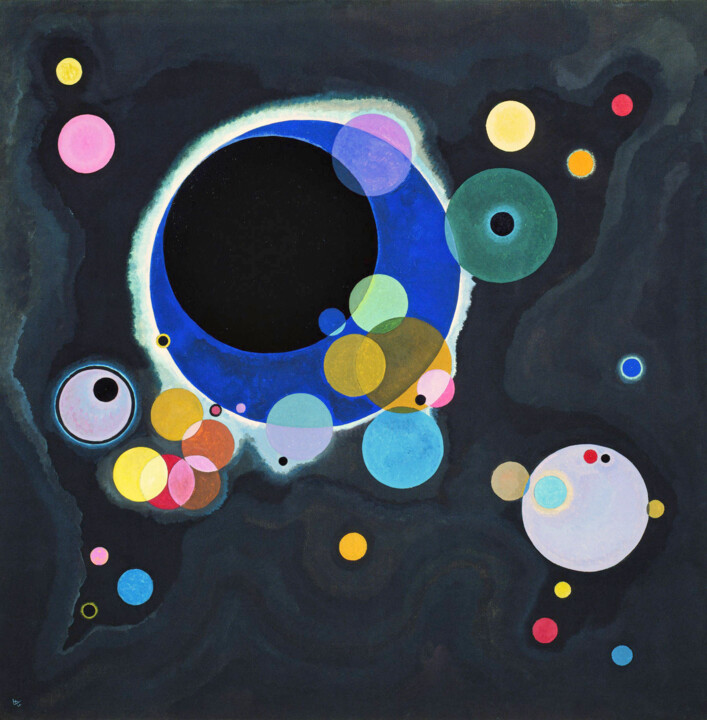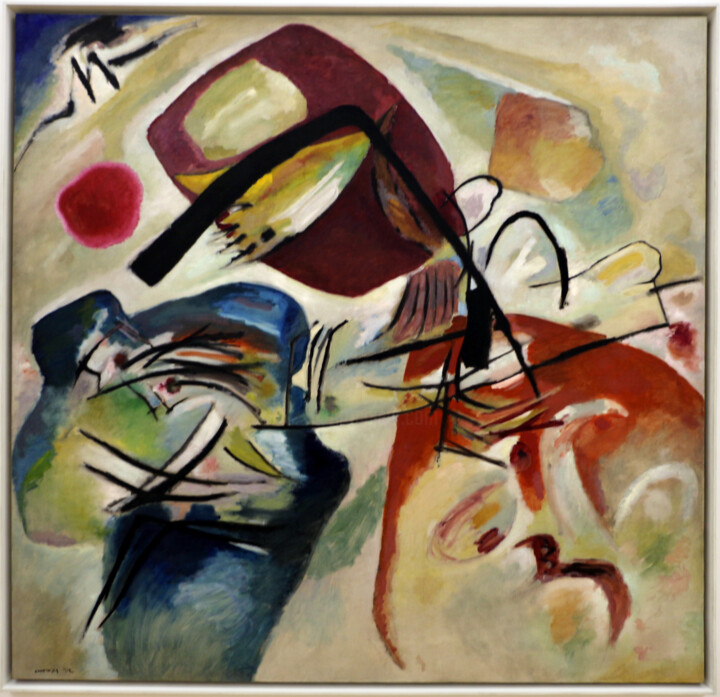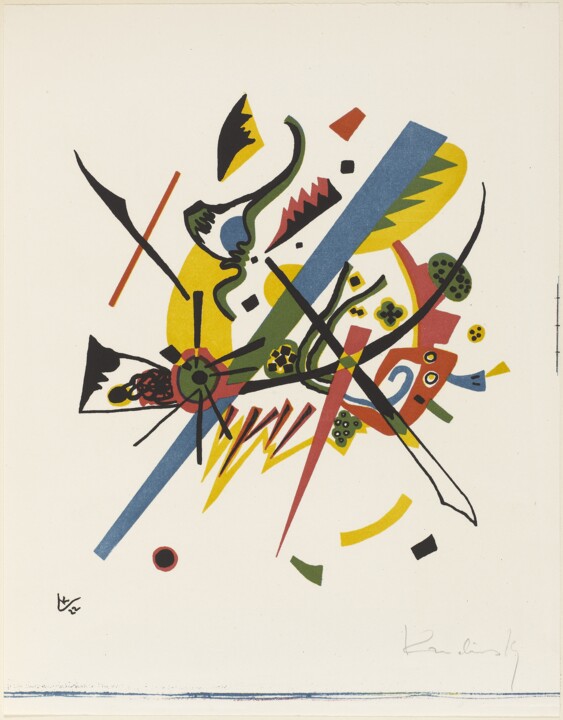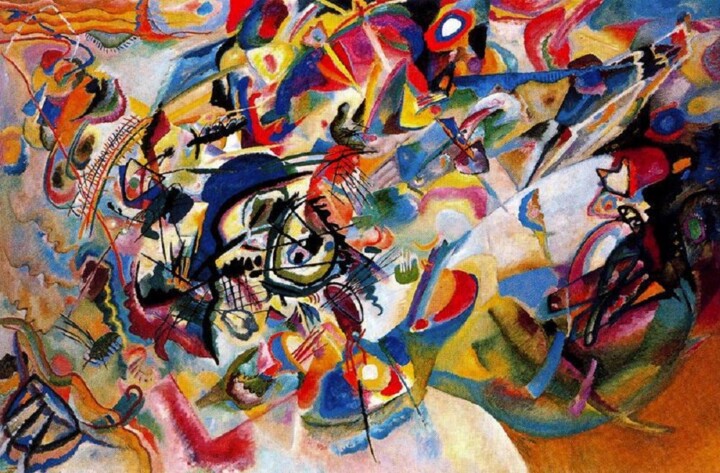 Wassily Kandinsky - Composition VII, 1913. Oil on canvas. Tretyakov Gallery, Moscow
Wassily Kandinsky - Composition VII, 1913. Oil on canvas. Tretyakov Gallery, Moscow
Who was Wassily Kandinsky?
Wassily Kandinsky (1866-1944) was a Russian painter and art theorist, widely credited with being a pioneer of abstract art. He was born in Moscow and studied law and economics before pursuing a career in art. Kandinsky was a key figure in the development of the Blue Rider movement, which sought to break away from traditional art forms and embrace abstraction.
Kandinsky's early works were heavily influenced by Impressionism and Fauvism, but he soon began to develop his own unique style. He believed that art should be a form of spiritual expression and that color and form could be used to evoke emotions and ideas.
In 1911, Kandinsky published "On the Spiritual in Art," a seminal work in which he outlined his theories about the relationship between art and spirituality. He believed that art had the power to transcend the material world and connect with the spiritual realm.
 Wassily Kandinsky
Wassily Kandinsky
During his career, Kandinsky experimented with a variety of media, including oil paint, watercolor, and printmaking. He was also a skilled teacher and taught at the Bauhaus school of art and design in Germany.
Kandinsky's later works were characterized by bold colors and dynamic forms. He often used geometric shapes and lines to create abstract compositions that were meant to evoke a sense of harmony and balance. Some of Kandinsky's most famous works include "Composition VII," "Yellow-Red-Blue," and "Improvisation 28."
Kandinsky was also interested in music and believed that it had a strong connection to visual art. He often referred to his paintings as "compositions" and believed that they were similar to musical compositions in their use of rhythm, harmony, and melody.
Kandinsky was forced to flee Germany during World War II and spent the last years of his life in France. He died in 1944 at the age of 77.
"Composition" paintings
"Composition" is the title of a series of paintings created by Wassily Kandinsky throughout his career. The works are characterized by their use of color, form, and dynamic composition, with Kandinsky seeking to express his spiritual and emotional experiences through abstraction.
Kandinsky began creating compositions in the early 1910s, after a period of experimentation with representational forms of art. His first compositions were inspired by his interest in theosophy, a spiritual movement that emphasized the unity of all things and the search for a deeper understanding of the universe. His earlier works, such as "Composition V" (1911), were inspired by the natural world, while later works, such as "Composition VII" (1913), became increasingly abstract and non-representational.
Kandinsky's early compositions were characterized by bold colors and simple shapes, often arranged in a way that suggested movement and energy. He was interested in exploring the relationship between color and emotion, and believed that art had the power to express the innermost thoughts and feelings of the artist.
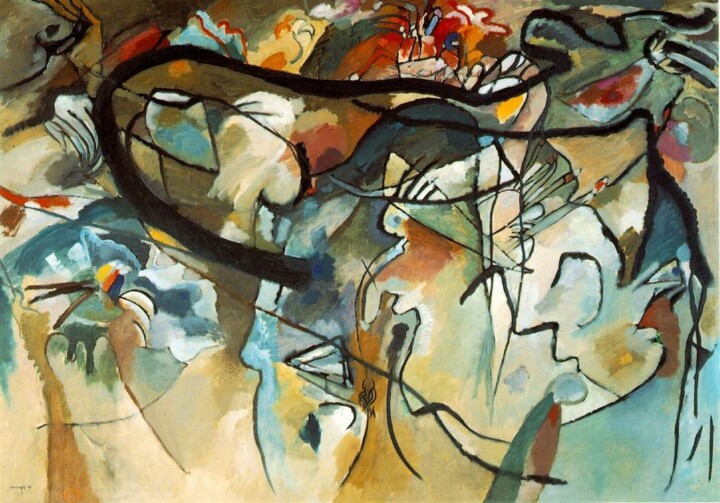 Wassily Kandinsky - Composition V, 1911. Oil on canvas. 190 x 275 cm. Private collection
Wassily Kandinsky - Composition V, 1911. Oil on canvas. 190 x 275 cm. Private collection
Over time, Kandinsky's compositions became more complex and sophisticated, as he experimented with different techniques and approaches to abstraction. His later compositions were often inspired by his interest in music, and he referred to them using musical terms such as "improvisations" and "compositions".
Wassily Kandinsky wrote extensively about his compositions and his theories of abstract art. In his seminal book "Concerning the Spiritual in Art," Kandinsky outlined his belief that art should be a means of expressing the spiritual and emotional aspects of human experience.
He described his compositions as a visual equivalent to music, and believed that they could evoke deep emotions and spiritual feelings in the viewer. He wrote about the importance of color, line, and shape in his paintings, and argued that they could be used to convey meaning and emotion in the absence of representational forms.
Kandinsky also wrote about the importance of intuition and spontaneity in his creative process. He often compared his approach to painting to that of a musician improvising on a theme, and believed that the best works of art were created when the artist was free from preconceived ideas and allowed their inner vision to guide them.
Kandinsky continued to create compositions throughout his career, and they remain some of his most important and influential works and played a major role in the development of abstract art.
“Composition VII”
"Composition VII" is a painting by Wassily Kandinsky that was completed in 1913. It is one of his most famous works and is considered a masterpiece of abstract art.
The painting is large, measuring 200 by 300 centimeters, and is characterized by a chaotic arrangement of lines, shapes, and colors. The composition is divided into distinct areas, with some sections featuring swirling lines and others consisting of more geometric forms. The colors used in the painting are bold and bright, with contrasting hues creating a sense of tension and movement.
There are a number of different shapes in the painting, including circles, triangles, and rectangles, as well as more abstract forms. The lines in the painting are often jagged and uneven, creating a sense of energy and dynamism. Despite the apparent chaos of the composition, there is a sense of balance and harmony that emerges from the interplay of different elements.
Kandinsky believed that his paintings could convey emotions and ideas through color and form, and "Composition VII" is often interpreted as a reflection of the tumultuous political and social climate of the time.
The painting has been described as a "symphony of colors," with different hues and tones blending and clashing in a way that creates a powerful visual effect. Although the painting is entirely abstract, some critics have identified recognizable forms within the composition, such as the suggestion of a boat or a church.
The painting has been praised for its use of rhythm and movement, with the eye being drawn from one section of the composition to another in a way that creates a sense of narrative.
"Composition VII" has been the subject of numerous interpretations and analyses over the years, with some critics seeing it as an expression of spiritual or religious themes, and others focusing on its formal qualities.
The painting has been exhibited in major retrospectives of Kandinsky's work, and is considered one of the key examples of the artist's contribution to the development of abstract art. Despite its fame, the painting was not universally praised at the time of its creation, with some critics dismissing it as a meaningless jumble of shapes and colors.
Today, "Composition VII" is recognized as a groundbreaking work that helped to push the boundaries of what was considered acceptable in art at the time. The painting is an example of Kandinsky's belief in the power of abstraction to convey complex ideas and emotions.
"Composition VII" is held in the collection of the State Tretyakov Gallery in Moscow, and is considered one of the most important examples of Russian art in the 20th century.
“Untitled (Study for Composition VII, Première abstraction)”
Kandinsky often made preliminary sketches and studies for his compositions, experimenting with different color and shape combinations before beginning the final work. He believed that the creative process should be intuitive and spontaneous, and he often allowed his inner vision to guide him as he worked. However, he also spent a great deal of time reflecting on his compositions and refining his ideas, and it's likely that he spent a significant amount of time planning and conceptualizing "Composition VII" before beginning the final painting.
“Untitled (Study for Composition VII, Première abstraction)” 1913 was Kandinsky's preliminary study for "Composition VII" and also his first abstract watercolor. It’s a small-scale painting that he created in preparation for the larger work. The study measures just over a foot in height and features a simplified version of the interlocking shapes and colors that are the hallmark of the final painting.
 Wassily Kandinsky - “Untitled (Study for Composition VII, Première abstraction)”, 1913. Musée National d'Art Moderne, Paris
Wassily Kandinsky - “Untitled (Study for Composition VII, Première abstraction)”, 1913. Musée National d'Art Moderne, Paris
The study reveals Kandinsky's process of experimentation and planning, as he worked out the composition and color scheme for the larger work. It also shows the evolution of his style, as he moved away from representational forms and towards pure abstraction.
Despite its smaller size and simplified forms, the study retains much of the energy and movement of the final painting. Kandinsky's use of color is particularly striking, with the warm colors of red and orange offset by cooler shades of blue and green.
The study is held in the collection of the Centre Georges Pompidou in Paris and is a valuable example of Kandinsky's working process and his development as an abstract artist.
Historical context of "Composition VII"
"Composition VII" was created during a period of significant artistic innovation in Europe. Kandinsky was a leading figure in the development of abstract art, which rejected traditional representational forms in favor of pure color, shape, and texture.
The early 20th century was marked by significant social and political change, with the rise of industrialization and urbanization leading to a sense of fragmentation and dislocation. Many artists, including Kandinsky, sought to express these changes through new forms of artistic expression that emphasized individual experience and emotion.
"Composition VII" was created just before the outbreak of World War I, a period of intense political and social upheaval. The painting can be seen as a reflection of this turbulent time, with its complex arrangement of shapes and colors suggesting a sense of movement and change.
The painting was also created during a period of great experimentation in art, with artists exploring new forms of expression and breaking down traditional boundaries between different art forms. Kandinsky himself was involved in a number of avant-garde movements, including the Blue Rider group, which sought to bring together artists of different nationalities and artistic styles.
Overall, "Composition VII" can be seen as a reflection of the artistic and social changes taking place in Europe during the early 20th century, as artists sought to create new forms of expression that reflected their experiences of a rapidly changing world.

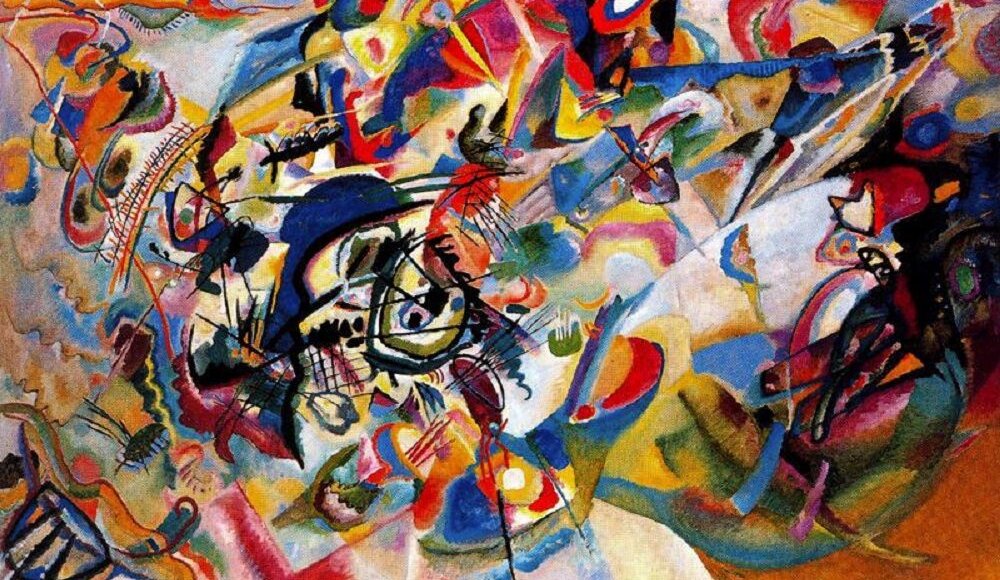
 Selena Mattei
Selena Mattei

